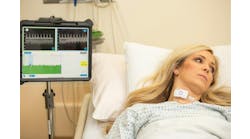Nearly nine out of 10 respondents to a national survey of physicians, nurses, and healthcare executives say their organizations are successfully improving the safety of patients. But real problems remain, and to make further improvements, respondents to the Health Catalyst survey said they need better health information technology to warn clinicians of impending patient harm, as well as more resources and greater organizational focus on the problem.
The need for improvement is compelling. Medical error is one of the leading causes of death in the U.S. While mortality grabs the headlines, non-lethal harm events are even more frequent, occurring at a rate 10 to 20 times higher than lethal events, according to The Journal of Patient Safety.
Despite the dismal statistics, confidence in current patient safety efforts is high, according to the online survey of 462 medical, quality and pharmacy professionals in healthcare organizations of all sizes across the U.S. Seventy-nine percent of survey respondents rated their organizations’ success in improving patient safety either “somewhat good” or “very good.” Only 11% rated their patient safety efforts as “poor.” However, on the opposite end of the scale, just 9% gave their efforts an “excellent” grade.
With 89% of survey takers still seeing room for improvement, the survey confirms that serious challenges prevent healthcare organizations from making a significant dent in preventable errors. Respondents identified several key obstacles that prevent them from achieving their patient safety goals, ranked here according to the percentage of respondents that selected them:
- “Ineffective information technology (data quality, patient matching, reporting)” and the related “lack of real-time warnings for possible harm events,” which requires technology – 30%
- “Lack of resources” including staffing and budget – 27%
- “Organization structure, culture or priorities” – 19%
- “Lack of reimbursement for safety initiatives” – 10%
- “Changes in patient population and practice setting” – 9%
- “Other” – 6%
- Over-reliance on voluntary, manual reporting

